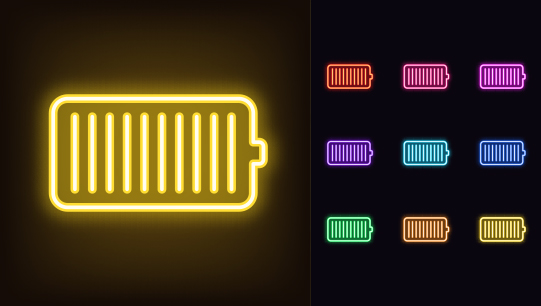In the era of ubiquitous connectivity and data-driven decisions, the conveyance of cloud information on edge devices has become a new design challenge. From smart homes and industrial automation to healthcare systems and transportation networks, the cycle of feedback between the edge and the cloud holds tremendous potential to enhance efficiency, provide real-time insights, and enhance user experience.
Designers of user interfaces (UI) as well as electrical engineers are still experimenting with approaches to the problem of human-machine interfaces (HMI) for edge devices. A set of best practices for user engagement and system performance has yet to be codified, yet progress has been made in understanding the core challenges and developing flexible hardware to handle UI design.
Edge devices, which may include sensors, smartphones, wearables, and industrial machines, interact with cloud resources for remote computational power and storage capabilities. They can also receive instructions from the output of analysis conducted on the cloud, such as inferences from artificial intelligence (AI) models.
While cloud data and analysis can be displayed flexibly on various dashboard applications on PCs or tablets, the UI on edge devices presents a far narrower set of constraints. Scarcity of space both inside the device and on its surface forces designers to make choices on what indicators are essential for local users.
Based on what methods have worked so far, here are some basic guidelines for edge device designers:
Prioritize Relevance
First and foremost, best practice in UI design begins with understanding which of many data points are most important for the users at the edge. Recognizing that users are seeking only the information relevant to their tasks, designers should focus on the most essential data points from an operational perspective.
Presenting only the most pertinent data in clear, logical groupings lets users understand the status of the device at a glance and then make informed decisions. Often device designers need to contextualize tasks in the user’s domain to understand their significance and to place their positions on the UI layout.
Rely on Intuitive Visual Language
In the realm of UI design, concise visual cues play an instrumental role in conveying cloud information effectively. Machine data has to be translated into a simple visual language which human intuition can easily interpret. For example, the blinking and multi-color coding of LEDs has now become universal in the computing world. Variable rates of flashing can indicate the health and speed of streamed data. Addressable RGB LEDs – which can produce a color gradient in a single component – are typically read as fluctuating variables between two extremes (red-to-green indicating high-to-low or hot-or-cold, for example).

Indicate Active Processes
Incorporating real-time updates into the UI fosters an environment of immediate awareness and action. Cloud information, often subject to rapid changes, should be reflected instantaneously on edge devices, providing users with the most current insights. Whether it’s monitoring energy consumption in a smart home or tracking inventory levels in a supply chain, real-time responsiveness enhances the accuracy and utility of the information presented. As a baseline, nearly all edge users need to read whether the device is connected to remote transmission and that real-time data transfer is active.
Use Progressive Disclosure for Depth
To accommodate the varying needs of users and to deal with many data points, UI design should embrace a progressive disclosure approach. A device might present basic status indicators initially, but after user interaction, a control panel can switch the display to other categories of cloud information. Progressive disclosure allows users to delve into more detailed data upon request and strikes a balance between simplicity and depth. This design philosophy avoids overwhelming users with a deluge of data upfront.
Offer Customization Settings
In some cases, operations at the local level may sometimes want certain data indicated upfront and, at other times, other attributes. Edge device designers can make UI settings adjustable to preferences for the presentation of cloud information. Incorporating this functionality not only confers the decision to prioritize attributes to the user, but it also expands the potential uses of device into a number of contexts.
Find Hardware Systems Made to Solve UI Issues
In the last few years, giant strides have been made in hardware components to solve common UI design issues. Light pipes, for example, eliminate light interference from multiple colors inside a device that often lead to misread displays. They also place sealed lenses around the interface openings to ensure optimal brightness and legibility. This new practice allows more space for circuit board components and more flexibility in the placement of boards inside the device and indicators on its face. New modular light pipe systems make integrating close-fitting light conduits into designs even easier.
Maintain Consistency Across Platforms
In a heterogeneous landscape of devices and platforms, consistency in UI design is essential. When cloud information can be accessed across various devices at the edge, the logic and visual logic should remain the same. Maintaining a consistent design language, layout, and interaction patterns ensures that users encounter a familiar and intuitive interface regardless of the device they are using.
How Bivar Helps UI Designers
While edge devices exchange an ample stream of information with the cloud, human users at the edge can only see a small part of it. The UI of the device is the point where edge-users are included in the machine processes. A high-quality interface provides them with simplified messages for actionable insights. By adhering to best practices, UI designers can establish an ecosystem that gives users control and the ability to make informed decisions in real time.
Bivar, the originators of ZeroLightBleedTM technology, can assist in any UI project for edge devices with a diverse line of LED light pipes and surface lenses to ensure durable and legible LED indicators. The Bivar engineering team has decades of aggregate experience in integrating LEDs and light pipes into a host of products. Find out how light pipe technology can improve your next design – contact us.
